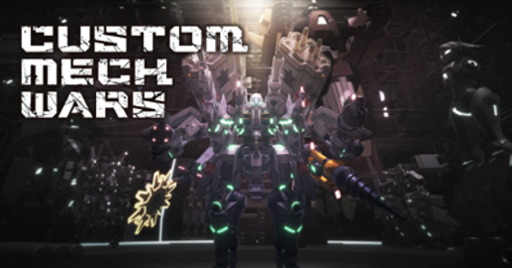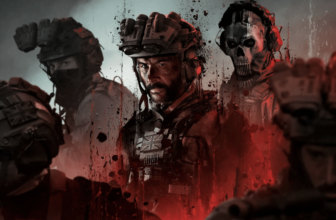
“Custom Mech Wars” offers players the opportunity to design their ideal mech, yet its lack of refinement and limited gameplay variety diminishes the appeal of doing so.
This new game, targeted at enthusiasts of Japanese Mecha and Mech-Assault genres, is a creation of D3 Publisher, recognized for the Earth Defense Force series. In “Custom Mech Wars,” gamers are part of the civilian-led Four-Seven Squadron, building their own war machines. While the game’s B-movie style narrative has its charm, the repetitive gameplay, subpar visuals, and various gameplay issues hinder its overall appeal, making it seem outdated compared to other mech-assault games released this year, like Armored Core 6 Ω.
In “Custom Mech Wars,” players follow the journey of a novice pilot joining the Four-Seven Squadron’s human-piloted G-Mech Unit. This unit was formed in response to devastating natural disasters triggered by a massive comet affecting the sun and nearby asteroids. The squad’s mission is to safeguard deserted major cities and various command centers for Earth’s defenses. The game then introduces a new threat: a massive comet, codenamed Asgard, approaching Earth.
The game’s portrayal of over-the-top disasters in its early missions is one of its more endearing features. For instance, a comet-induced earthquake triggers a volcanic eruption, which then causes AI-powered G-Mechs to malfunction and become hostile. After defeating these rogue G-Mechs, a zombie virus is discovered, reanimating the defeated units. While this ridiculousness initially adds charm to the game, it soon becomes overshadowed by glaring issues, particularly when players begin operating their customized G-Mechs.
“Custom Mech Wars” allows extensive customization of G-Mechs, enabling players to equip their creations with a wide array of parts as they progress. The game’s Hangar and Research Facility offer the chance to assemble G-Mechs with various capabilities, from heavily armed war machines to agile mechs armed with katanas. Players can construct up to four different G-Mechs and switch between them during missions. The only constraint in design is the weight, affecting mobility and combat effectiveness. The game also lets players tailor their G-Mech’s HUD, adding various indicators and radar elements.
However, the game’s exploration and mobility aspects heavily depend on the player’s G-Mech design, with certain part combinations limiting the ability to navigate battlefields effectively. This limitation becomes evident in the game’s level design, which doesn’t accommodate the full range of customization options. A G-Mech suitable for open fields might be ineffective in city environments, highlighting a significant mismatch in the game’s design.
The most prominent issues in “Custom Mech Wars” are its visuals and level designs. Despite its B-movie narrative flair, the game lacks thematic or in-engine cutscenes, relying solely on text and Japanese-language narration for storytelling, often marred by spelling and grammar errors. These issues, though minor, further reflect the game’s lack of polish.
The game’s missions suffer from poor visuals, reminiscent of early 2000s games, with a limited variety of enemy G-Mechs and repetitive combat animations. Players are placed in sandbox-style battlefields with enemies appearing abruptly. The game recycles the same four types of battlegrounds across its 40 story missions, with minimal variation in weather conditions.
“Custom Mech Wars” provides little guidance in combat, emphasizing its focus on customization. Players can choose various difficulty levels, with higher difficulties offering more rewards and parts for G-Mechs. However, playing on easier settings might hinder later game progress due to fewer collected parts. The combat is straightforward, with single-button controls for different types of weapons. Special Items picked up during combat, like “NoDamage” or “Unlimited” ammo, are crucial for success.
Yet, the game’s story missions lack diversity in both combat and objectives. Despite different narrative contexts, each level essentially involves defeating waves of enemies, with the primary goal repeatedly being to “Destroy All Enemies!” The game’s enemy variety is limited, and even with an array of parts and weapons, combat becomes monotonous.
“Custom Mech Wars” also faces challenges in its combat scenarios. Regardless of a G-Mech’s size or parts, simple obstacles like elevated highways or streetlamps can halt it, and a single hit can destroy the G-Mech. Players then must flee on foot, call another G-Mech, and escape before enemies target the replacement.
Friendly fire in combat adds another layer of difficulty, with even the easiest setting featuring a 10% friendly fire damage rate. This aspect often results in lost progress due to damage from allies, whether from accidental shots or collisions.
The game’s upcoming final release promises a Multiplayer mode, which might address some of the single-player mode’s issues. The ability to communicate with other players could mitigate friendly fire incidents and make combat at higher difficulties more engaging.
In conclusion, “Custom Mech Wars” allows extensive mech customization and has a unique narrative style, but these elements are not enough to sustain





